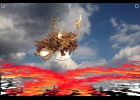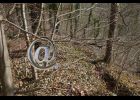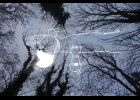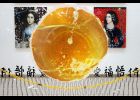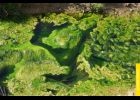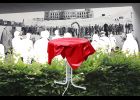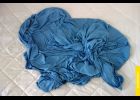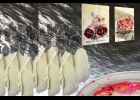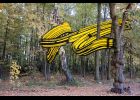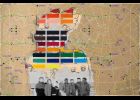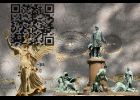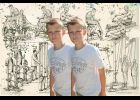Communication and education for otherness: photographic expeditions as an exercise in the pedagogy of intersubjectivity
The main purpose of this article is to reflect on how Flusser's thought can contribute to the development of communication and education projects in awareness of otherness. As such, it presents relations between the “pedagogy of intersubjectivity,” designated by Flusser in his first articles and classes in Brazil, and an experiment in anthropo-ecological nature and intersubjective construction: the photographic expeditions with the young people of the collective “Nofotofake” in the Heliopolis favela conducted by Roberta Dabdab.
From Language to Communication – Vilém Flusser’s path from language philosophy to communication and media theory
This article reconstructs Vilém Flusser’s first academic field of research, the philosophy of language, documented by the two books, Language and Reality and Philosophy of Language, that arose from his initial interest in language in general; and how these early probings were preserved in the later course of his work when his focus changed from language to communication and mediation. It fleshes out concepts that represent a continuity in his work, such as sign, meaning and symbol, information, knot, entropy, discourse, the technological world, and dialogue and conversation; all of this being based on a wider concept of language that encompasses not only speech but also sound, images, and symbolic forms in general. It intends to shed light on the continuity in Flusser’s work over the course of its progress and changing focuses.
Die Verbesserung von Beobachtung
An artistic theory is different from a scientific one. The artist theorizes by addressing the breaking point of modernity, which is characterized by a change from considering a work to be a conceptual, and considering it to be a physical object. The artist describes this as a part of his art. Vilém Flusser analyzes the camera (the black box) in relation to administrative, economic, political, social apparatuses. Roland Barthes considers pictures from the double perspective of studium (the scanning process) and punctum (the captivating moment). In the present case, the artist’s theory and the photo collages bearing the title Photo Shop Massacre are to be understood in their conceptual intention as an indication of the actual massacre that is taking place around us.
A dimensão da escrita em Vilém Flusser e Guimarães Rosa
Vilém Flusser wrote about the Brazilian modernist author João Guimarães Rosa (1908-1967) who he met personally. Although most of Guimarães Rosa’s work had been written before their meeting, Flusser’s thinking might have influenced his writing. In 1961, Guimarães Rosa published the short story Fita verde no cabelo and Flusser wrote an article about it. Both texts were published the same year in the Literary Supplement of O Estado de São Paulo. The essay focuses on questions of style as well as on the cultural and etymological references of the two writers.
FlusserBrasil
FlusserBrasil was a virtual space for the preservation and dissemination of Vilém Flusser’s work. Its major goal was to make his texts available and to promote the publication of his work in Brazil and worldwide. The site has been recently discontinued (February 11, 2024).
Übersetzung, Wissen und Kultur in der freudschen Psychoanalyse und im Werk Vilém Flussers
This article aims to present Sigmund Freud and Vilém Flusser not only as two thinkers with biographical similarities, but mainly as two intellectuals of converging ideas. Both developed a critical analysis of the human unease (Unbehagen) mediated by the symbolic, and both, each in his own way, tried to find solutions to deal with this unease using language as an instrument. Both saw in translation an important instrument to overcome cultural boundaries.
The Sixth Rung
Digital media and its effects on society have been widely discussed and questioned by many authors, for instance one’s additional self (selves) such as Facebook or Instagram and its later ways to behave virtually (Case 2014) or the effects of uninterrupted entertainment on memory, attention span and creativity (Harris 2015). Besides being an occupation during idle time, an internet connection and its gadgets have become an essential tool to accomplish some of the most ordinary tasks, such as track addresses or pay bills, as well as a powerful feature within the scientific-academic environment. The shift from analog to digital has probably been achieved. The philosopher Vilém Flusser argued that the inadvertent use of “technical” media could substantially change the way we process information, the way we think. Although Vilém Flusser had already highlighted the importance of idle time during which critical thought takes place, it is only during spare time that one is able to re-think about what was done, criticize it and adjust accordingly. Flusser’s major outcome is a possible reshaping of historical consciousness.
The following text discusses the gains and losses of cognitive dimensions after the digital shift and its impacts on the architectural design process, based on Vilém Flusser’s “hypothesis that human civilisation has seen two fundamental turning points since its beginning. The first (…) may be defined as ‘the invention of linear writing’. The second (…) may be called the invention of technical images”. (Flusser 2000; 7). The research looks at new media within the architectural design process: tri-dimensional modeling versus two-dimensional representation, use of smartphones and other interactive media by constructing analogies between writing and architectural representation, and how these new procedures are radically changing consciousness and the task of developing knowledge.
O tradutor e a janela: Entre o método e a prática
This paper addresses the issue of how to use translation as a method to understand archives. To this end, this paper proposes an intersection between Vilém Flusser’s reflection about his own writing method and the artistic experience of Mabe Bethônico as translator of the archives of the geologist and geographer Edgar Aubert de la Rüe.
Programing the Visible: Dialogues between Vilém Flusser and Harun Farocki
The 2016 São Paulo exhibition “Programando o Invisível” [Programing the Invisible], showcasing works by the artist and filmmaker Harun Farocki (1944-2014), questioned the role of images in the 21st century, and particularly those images constructed by computer algorithms for video games. One of the videos in the exhibition captured the dialogue that took place between Farocki and Vilém Flusser (1920-1991) in 1986. In this theoretically rich and promising video, titled “Shocking sentences, shocking images: a conversation with Vilém Flusser,” they discussed the hegemony of images and of their power in programing our visibility. The theme is one of the central questions in both their works, as if the filmmaker and the philosopher were speaking about the same thing, although in different and complimentary ways. Their works similarly urge a reflection about the possibilities of creation of a critical perspective in face of our image culture, and they both emphasize the question of freedom in a society increasingly programed and dominated by technical images.
Meta-Švejk
This text is an extract of a planned bilingual Portuguese (O homem sem chão) and German (Ein Leben in der Übersetzung) biography of Vilém and Edith Flusser by Gustavo Bernardo and Rainer Guldin. It deals with Flusser’s Czech origins from the point of view of Franz Kafka’s Die Verwandlung (The Metamorphosis) and Jaroslav Hašek’s The Good Soldier Švejk written between 1921 and 1923.
